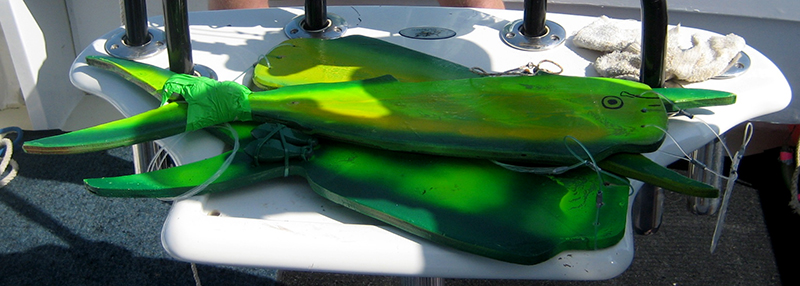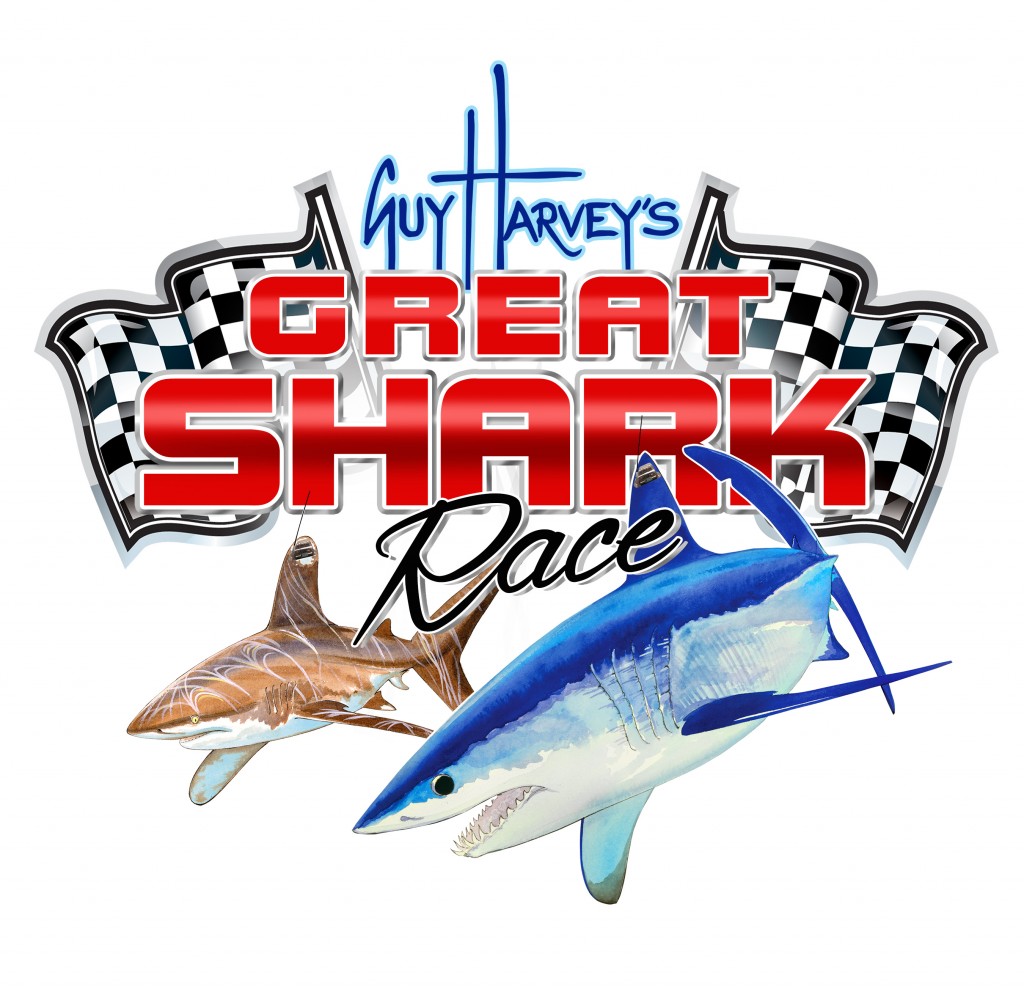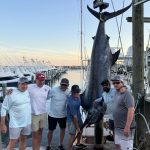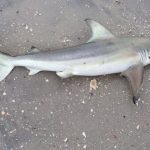Article courtesy of Capt. Ned Stone | February 25, 2015
[one_half][responsive]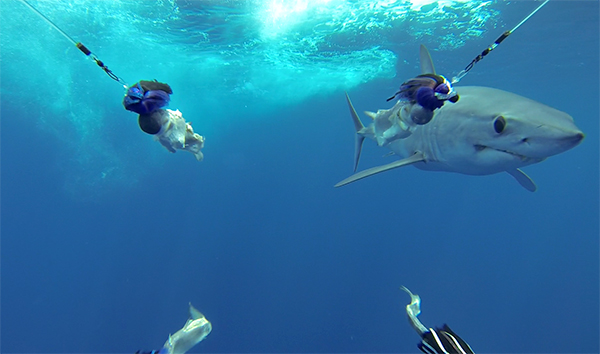 [/responsive][/one_half] [one_half_last]
[/responsive][/one_half] [one_half_last]
[/one_half_last]
Every angler has a favorite fishing story and they all have their roots in adrenaline. Seeing your first sailfish go airborne! Watching a blue marlin on the bite! Striking a tarpon on fly! All produce a moment that is electric; a memory etched in the brain. It is hard to plan these special moments but Guy Harvey Outpost and Guy Harvey Research Institute (GHRI) have created an expedition to Isla Mujeres, Mexico for adrenaline junkies: Satellite Tagging Mako Sharks.
Big game fishing brings big thrills and makos are top predators on the Blue Planet. Anglers fish adjacent to GHRI scientist with a front row seat as the “Pit crew” races to release healthy makos.
The idyllic island of Isla Mujeres is a great venue for a fishing trip. It lies just north of the glitz and glass of Cancun but moves at an entirely different pace. Cancun International Airport provides easy access but the 20 minute ferry ride sets “Isla” worlds apart. Bring your sandals as they, along with bicycles and golf carts are the primary mode of transportation on Isla.
Mako populations are under worldwide pressure as their steaks are popular table fare and their fins are in high demand in Asia where shark fin soup is erroneously perceived to take the place of Viagra. Knowing where fish go, where they breed and where they spawn are critical pieces of information in successfully fisheries management. Good science makes for better conservation policy.
With GPS enabled Satellite Position or Temperature (SPOT) Tags enable almost real time tracking of tagged animals. GHRI has tagged Blue Marlin, White Marlin, Sailfish, Tiger Sharks, Oceanic Whitetip Sharks, Sand Tiger Sharks and Mako Sharks for study. With SPOT tags a signal is transmitted whenever the Shark’s dorsal fin breaks the surface.
Yucatan sport-fishermen have seen makos in the area for decades but they were always thought to be incidental. For the past three years, Guy Harvey and the scientists from GHRI have been tagging makos off the island of Isla Mujeres. The makos show up consistently each March. Capt. Anthony Mendillo has pioneered Isla’s mako fishery. To date 18 makos have been tagged by GHRI off Isla Mujeres. Their tracks can be seen at http://www.nova.edu/ocean/ghri/tracking/
The makos off Isla Mujeres have been eager to eat trolled dorados. During the Guy Harvey Outpost Expedition of March 2014 dorados were not readily available but Capt. Mendillo had a quick response. He cut 24” dorado profiles out of 1/2” plywood and painted them de oro, (golden, hence the origin of d’orado). We trolled two dorado teasers and three large swimming bonitos rigged on cable. The new system worked like a charm. In two days of fishing the GH Outpost Team caught 3 makos out of five solid bites. We had 3 more makos in the bait spread to get us amped up.
What does one do with a lively mako shark? How do you safely hand off a very live shark to another boat? Capt. Mendillo and his team have worked out an elegant solution: clip 75 feet of 7/16’ nylon line to the leader with a pollyball float at the other end. The angler eases off the drag as the captain pulls ahead. The crew on the Keen M gaff the pollyball and wire the fish. The Keen M features a transom mounted cradle to safely control the shark. With the mako secured & raw water flowing through its mouth via a 2” PVC pipe the scientists go to work. They gather time, date, location, water temperature, length, girth and gender information. Four holes are drilled in the nerveless dorsal fin to mount the SPOT transmitter.
To date roughly half the makos have gone north into the Gulf of Mexico and returned to Isla Mujeres. Another quarter have traveled south and returned to Isla Mujeres. These fish range from 100 to 500 pounds but makos can grow to 1300 pounds. A few have traveled to the southeast and one of these (Tough Guy) made it almost to Newfoundland with an extended visit at Ocean City, Md. site of the next GHO mako expedition in May.
The Guy Harvey Great Shark Race
Anglers who go on the Isla Mujeres Mako Mexico Expedition will automatically be entered into the Great Shark Race with chance to win a fishing trip to Grand Cayman with Guy. To learn more about wide ranging mako and oceanic whitetip sharks Guy Harvey has created The Great Shark Race (GSR). The data gathered in this race allows researchers to better understand the migration patterns and habitat utilization of these apex predators. By tagging these wide ranging ocean rovers with satellite tags we can track where they roam in near real time.
On April 2, 2015 the green flag drops and the race is on. The winning shark will be the one covering the greatest distance over six-months. Great Shark Race participants receive
- Naming rights to their shark (promote your business or one up your friends)
- Custom race certificate featuring your shark’s name and tag number.
- Limited edition Great Shark Race print signed by Guy Harvey.
- The sponsor of the winning shark will receive the ultimate fishing vacation for two with Guy Harvey in Grand Cayman.
To increase the number of makos tagged this season Guy Harvey Outpost & GHRI have expanded the Expedition for 2014 and participation is open to a limited number of anglers.
Join Guy Harvey Outpost’s Expedition to Isla Mujeres and you can participate with Guy Harvey and the Guy Harvey Research Institute (GHRI) to catch, tag and race your own shark. Or for more information call Guy Harvey Outpost at 800-513-5257.



